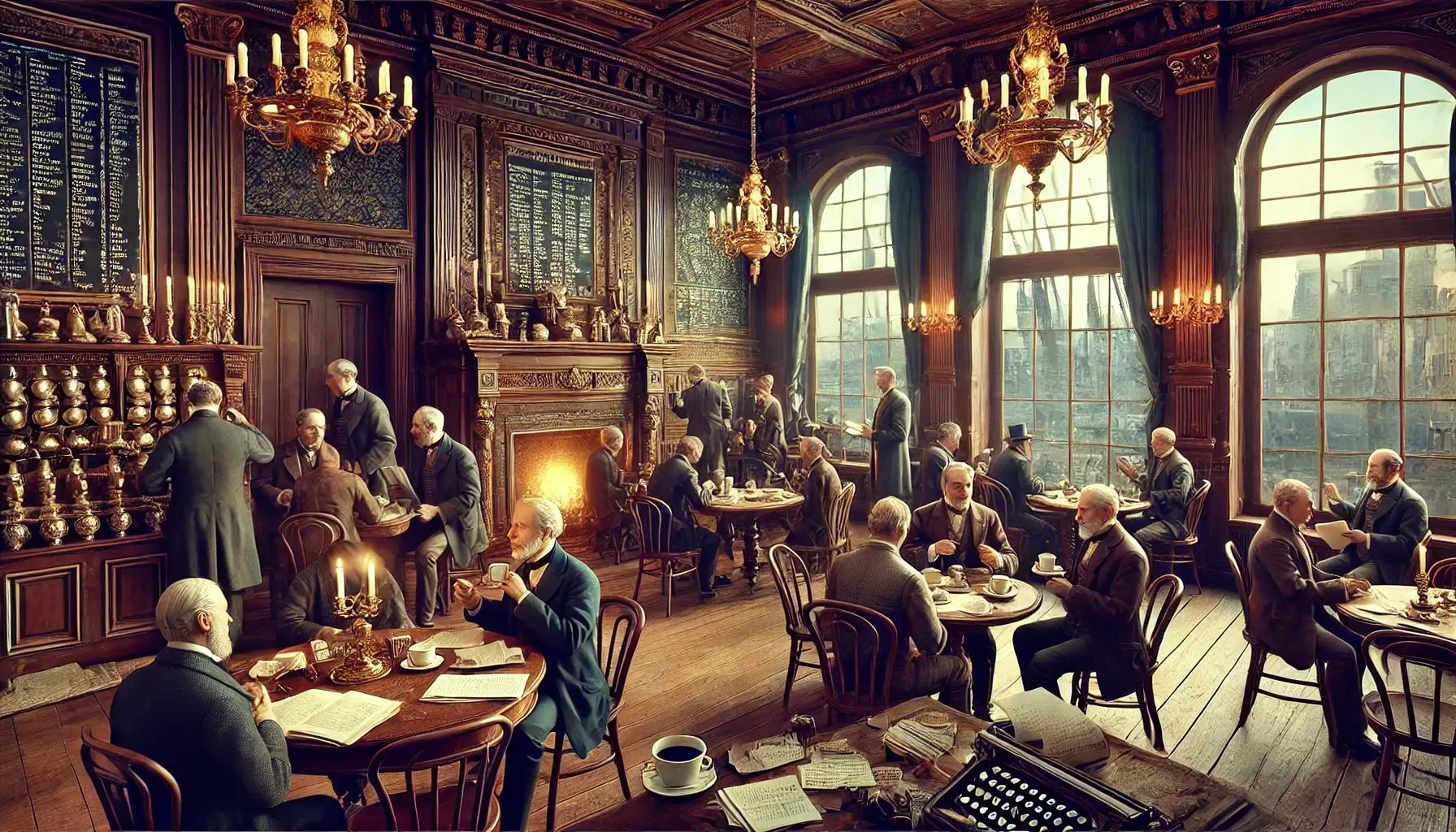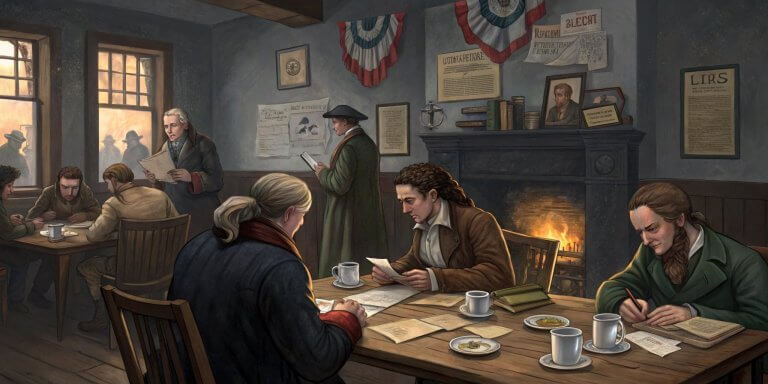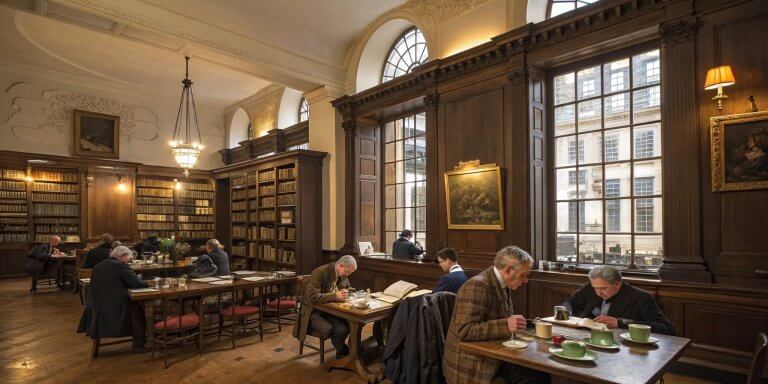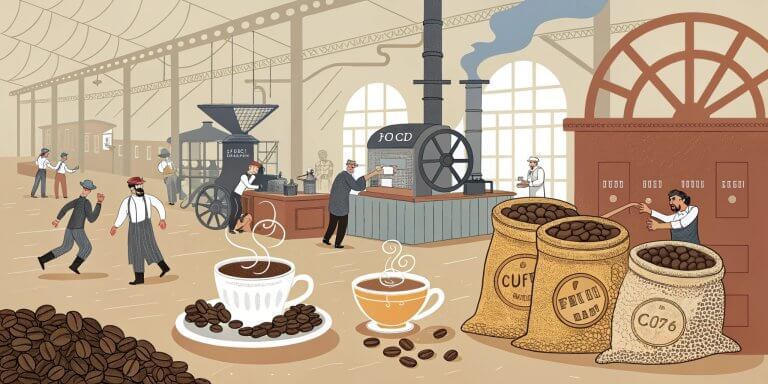
Coffeehouses in the 17th and 18th centuries were more than places to grab a drink—they became centers for business, finance, and global trade, influencing the economy in ways that can still be felt today. These establishments fostered connections between traders, merchants, and business people, ultimately playing a critical role in the birth of modern financial institutions. By exploring the economic impact of coffeehouses, we can see how these humble venues became powerhouses of commerce and finance, shaping our world.
The Birth of Coffeehouses as Economic Hubs

Infographic of a 17th-century coffeehouse as economic hub
Coffeehouses, initially conceived as social spaces, swiftly transformed into economic hubs as they traversed from the Middle East to Europe in the 1600s. In cities like London, these establishments became the rendezvous for merchants and business people, fostering an open, inclusive atmosphere that made them unique—anyone, regardless of class, could enter to engage in business discussions over a cup of coffee.
In London, coffeehouses soon became known as “penny universities,” where people from all walks of life could engage in business discussions for the price of a single cup of coffee.
One famous example is Lloyd’s Coffee House, which later became Lloyd’s of London, one of the world’s most prominent insurance markets. Here, maritime insurance contracts were made, and deals were struck between ship owners, captains, and merchants
The neutrality of coffeehouses was critical to their success as business venues. In an era when traveling across London could be dangerous, conducting business in a safe, relaxed space made coffeehouses essential to the city’s economy.
Coffeehouses and the Birth of Modern Financial Institutions
As more traders and merchants flocked to coffeehouses, these venues became fertile ground for the birth of modern financial institutions. One of the most essential coffeehouses of the time was Jonathan’s Coffee House, where stockbrokers gathered to trade shares. This informal gathering eventually led to the creation of the London Stock Exchange.
The creation of these financial institutions was revolutionary. In coffeehouses, information could be exchanged quickly and efficiently, informing traders about international markets and global events. This exchange of information made coffeehouses essential for financial growth, providing a direct link between business discussions and global commerce.
Global Trade and Coffeehouses
Coffeehouses were also crucial to the expansion of global trade. As the European colonial empires grew, Dutch, British, and French merchants used coffeehouses to discuss shipping routes, trade agreements, and market prices. These discussions helped coordinate the import and export of goods like spices, tea, and coffee from colonies in Asia, Africa, and the Americas.
The coffee trade itself was central to this expansion. Coffee became one of the most traded commodities globally, second only to oil in terms of value.

Infographic of global coffee trade network
Coffeehouses were essential in coordinating the coffee trade, as merchants discussed everything from supply and demand to transportation logistics.
This global trade network, facilitated by coffeehouses, supported the economies of both European countries and their colonies. Many coffee-producing countries, including Brazil and Colombia, owe much of their economic growth to the global demand for coffee negotiated and traded in European coffeehouses.
Coffeehouses as Information Hubs for Commerce
Another major reason coffeehouses became financial powerhouses was their role as information hubs. Before the invention of modern communication systems, coffeehouses were one of the best places to get the latest news. Merchants and business people could learn about international events—wars, treaties, market changes—that could affect their business.
Many coffeehouses had runners who brought news worldwide, allowing business people to stay up-to-date on critical information. This rapid exchange of information was vital for the fast-paced world of trading and finance, making coffeehouses indispensable to merchants.
Real Estate and Urban Development
In addition to facilitating commerce and trade, coffeehouses also significantly impacted urban development. Famous coffeehouses often became city anchor points, attracting other businesses and raising property values. This phenomenon is still seen today, where trendy coffee shops can signal that a neighborhood is “up and coming,” as seen in the revitalization of Williamsburg in Brooklyn.
The economic influence of coffeehouses went beyond just their immediate surroundings. They often contributed to broader urban development by attracting foot traffic and supporting local businesses. This role as a community hub continues in modern cities, where coffee shops serve as gathering places for entrepreneurs, freelancers, and creative professionals.
Small Business Growth and Entrepreneurship
Opening a coffeehouse became a popular business venture due to its relatively low barriers to entry. Many successful entrepreneurs started with a single coffeehouse and expanded into larger chains. For example, Blue Bottle Coffee began as a small, artisanal coffee shop but has since grown into a global brand, showcasing how a simple coffeehouse can evolve into a thriving business.
Coffeehouses provided aspiring entrepreneurs with a platform to experiment with business ideas, hone their customer service skills, and forge connections with local businesses. Their success as small businesses also contributed to job creation and local economic growth, offering employment opportunities for servers, roasters, and suppliers.
Environmental and Social Contributions
Beyond their economic impact, coffeehouses have been champions of sustainability and fair trade practices. Many coffeehouses today are dedicated to supporting sustainable coffee production and fair wages for coffee farmers. By sourcing their beans through direct trade or fair-trade initiatives, coffeehouses not only ensure high-quality coffee for consumers but also contribute to the betterment of smallholder farmers’ livelihoods.

Sustainable coffee sourcing lifecycle
Furthermore, coffeehouses have been key players in reducing waste through programs that encourage reusable cups and recycling coffee grounds. Some coffeehouses have even developed innovative products, such as reusable coffee cups from recycled coffee grounds.
Conclusion
The economic impact of coffeehouses in the 17th and 18th centuries was profound, laying the groundwork for many of today’s financial institutions, trade networks, and business practices. From their role in creating the stock market to fostering global trade, coffeehouses were vital hubs of commerce and finance. Even today, coffeehouses influence economies by supporting entrepreneurship, promoting sustainability, and driving urban development. What began as simple social spaces quickly grew into powerful centers of business and finance, shaping the world we know today.






